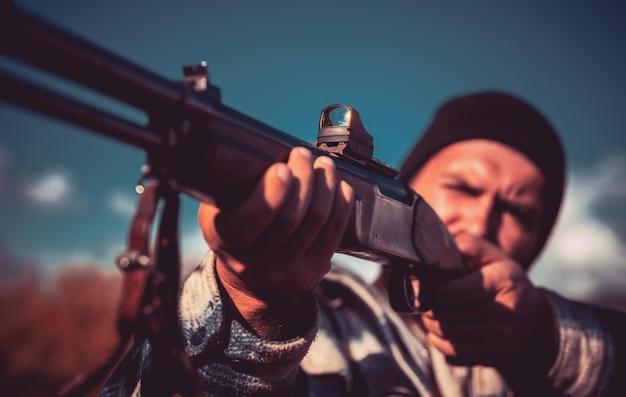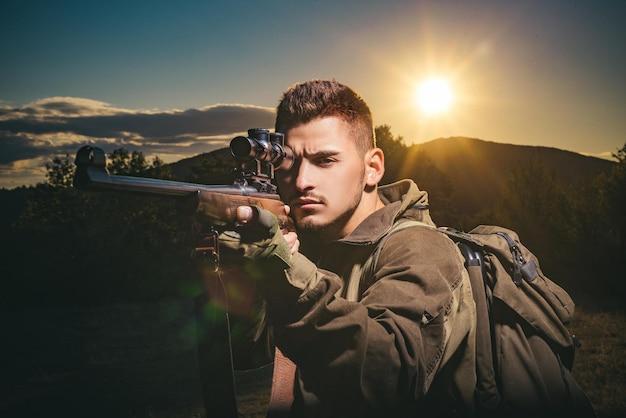Snipers are often associated with their incredible precision and ability to take out targets from long distances. Their exceptional marksmanship raises questions about where they aim and why. One common misconception is that snipers always aim for the head. In this blog post, we will delve into the strategies and techniques used by snipers and explore the reasons behind their target selection.
To gain a deeper understanding, we’ll explore various aspects related to snipers, such as the ammunition they use, the role of a spotter, the mechanics of sniping, and the impact of shots on the human body. We’ll also uncover why snipers do not exclusively aim for the head and where they typically aim to achieve lethal results.
So gather around as we debunk myths, unveil facts, and shed light on the fascinating world of snipers. Strap in for an engaging and informative journey into the world of precision shooting.
Do Snipers Really Aim for the Head
When it comes to snipers, their precision and accuracy are the stuff of legends. But where exactly do they aim? Are they all about headshots like some Hollywood action movie? Well, let’s explore this topic and debunk a few myths along the way.
Anatomy of a Sniper Shot
Before we dive into the headshot frenzy, it’s important to understand the anatomy of a sniper shot. Snipers aim for the part of the body that offers the highest chance of hitting their target effectively and immediately neutralizing the threat. Body parts like the chest and pelvis are prime targets due to their larger size and vital organs within.
The Headshot Myth
Contrary to popular belief, snipers don’t exclusively aim for the head. While headshots do make for impressive Hollywood scenes, they often aren’t a sniper’s first choice in real-life scenarios. Why? Well, for starters, the head is a smaller target and more difficult to hit, especially when the target is moving. And let’s not forget the pesky protective gear like helmets that can significantly reduce the chances of a fatal headshot.
The Center of Mass Approach
Most trained snipers follow a simple yet effective strategy: aim for the center of mass. The center of mass refers to the midsection of the body, specifically the chest and abdominal region. These areas offer a higher chance of hitting the target and incapacitating them quickly. By targeting the center of mass, snipers maximize their chances of a successful shot while minimizing the risk of a non-lethal hit.
Considerations for Headshots
But hold your horses, we’re not saying that snipers never aim for the head. There are certain situations where a headshot might be the best option. One instance is when the target is wearing body armor, making shots to the chest less effective. In such cases, a skilled sniper might opt for a headshot to ensure a higher chance of a fatal hit.
The Role of Precision
Precision is the name of the sniper game, and they train relentlessly to excel in it. Whether aiming for the head or center of mass, snipers count on their unmatched marksmanship skills to make the shot count. They consider factors like distance, wind speed, bullet drop, and even humidity to deliver an almost surgical strike. So, whether it’s a headshot or center of mass, the precision remains top-notch.
While Hollywood often glorifies dramatic headshots, the reality is that snipers prioritize the center of mass for their shots. The chest and abdominal regions offer larger targets and vital organs, increasing the chances of an effective takedown. However, there are situations where a headshot becomes necessary, particularly when body armor is involved. So, the next time you watch an action-packed sniper movie, remember that there’s more to a sniper’s aim than just the head.
FAQ: Do Snipers Aim for the Head
Welcome to our FAQ-style section where we answer all your burning questions about snipers and whether or not they aim for the head. Strap in, folks, because we’re about to dive deep into this topic!
What Type of Bullets Do Snipers Use
Snipers are equipped with specialized ammunition called sniper rounds or sniper bullets. These bullets are typically heavier and longer than regular bullets and are designed for increased accuracy and range. They can vary depending on the specific rifle and mission requirements, but popular choices include the .338 Lapua Magnum and .50 BMG.
Can Snipers Work Without a Spotter
While snipers often work in teams, consisting of a sniper and a spotter, there are instances where a sniper might operate alone. However, having a spotter is advantageous as they assist with target detection, ranging, wind calls, and provide an extra set of eyes to ensure the mission’s success.
How Do Snipers Kill
Snipers employ precision shooting techniques to eliminate their targets efficiently and effectively. They carefully calculate variables such as distance, wind speed, bullet trajectory, and even the target’s movement to make accurate shots. By aiming for vital organs or other vulnerable areas, snipers prioritize incapacitating their targets swiftly.
How Do Sniper Spotters Work
Sniper spotters play a critical role in assisting snipers. They use high-powered optics to scout the area, identify targets, estimate distances, and provide crucial information to the sniper for making accurate shots. A spotter remains in constant communication with the sniper, acting as their eyes and ears on the battlefield.
Do Snipers Shoot Between Heartbeats
The idea of snipers shooting between heartbeats is somewhat of a myth. While it’s true that controlling one’s breathing is crucial for steady aim, snipers are trained to take their shots in the natural pause between breaths, not specifically between heartbeats. The goal is to reduce any movement that could affect the bullet’s trajectory.
Why Do Snipers Open Their Mouths
You might have noticed snipers opening their mouths while taking shots, and no, it’s not to catch flies. It’s actually a technique called the Valsalva maneuver. By slightly pressurizing the chest, it helps stabilize the shooter’s body and minimizes any involuntary movement during the critical moment of firing the rifle.
Do Snipers Sleep
Snipers are not superhumans who can go without sleep indefinitely. Like everyone else, they need rest to perform optimally. However, during missions, when prolonged surveillance or waiting periods are required, snipers may take short naps to maintain their alertness and mental focus. They are masters of adapting to challenging conditions!
Do Snipers Work in Pairs
Yes, snipers often work alongside a spotter as part of a two-person team. The spotter provides vital assistance in target acquisition, ranging, and gathering information, allowing the sniper to focus solely on the shot. This teamwork ensures a higher level of accuracy and effectiveness in accomplishing the mission.
Why Don’t Snipers Aim for the Head
Contrary to popular belief perpetuated by Hollywood movies, snipers usually avoid aiming for the head. The head is a small and highly mobile target, making it difficult to hit consistently. Snipers are trained to aim for larger target areas with greater chances of incapacitating the enemy, such as the chest, heart, or other vital organs.
Where Do You Aim to Kill
Snipers aim to neutralize their targets effectively. They typically target areas with high vulnerability, like the chest or upper thoracic region. By aiming for vital organs like the heart or lungs, snipers maximize the chances of incapacitating the target and preventing any potential resistance or retaliation.
Where Do You Aim on Humans
For a sniper, accuracy is of paramount importance. They aim for high-impact areas that offer better chances of immediate incapacitation. This includes the chest, specifically focusing on the heart, lungs, or arteries. However, the precise aiming point may vary depending on factors such as distance, angle, and mission parameters.
How Long Can Snipers Stay Awake
Snipers are trained to operate under incredibly challenging circumstances, including extended periods of sleep deprivation. While individual endurance may vary, a well-trained sniper is capable of staying awake for multiple days if necessary. However, they understand the importance of maintaining mental sharpness and will prioritize rest whenever possible.
Do Snipers Carry Two Rifles
No, snipers typically do not carry two rifles. However, they may have a secondary or backup weapon, such as a pistol, for close-quarters engagements or as a last resort. Snipers rely on the accuracy and range of their primary rifle, combined with their exceptional marksmanship skills, to fulfill their mission objectives.
Can You Survive Getting Shot by a .50 Cal
Surviving a .50 caliber gunshot is highly unlikely. .50 cal bullets are extremely powerful and can cause devastating damage to the human body. They can penetrate armor, concrete, and even light vehicles. The impact is often instantly incapacitating or fatal, making the .50 cal a preferred asset for snipers in certain situations.
Do Snipers Hold Their Breath
Snipers do not hold their breath when taking a shot. Instead, they practice a technique called natural respiratory pause. This means they time their trigger squeeze during the natural pause between breaths for maximum stability. Holding one’s breath creates tension and can negatively affect accuracy, so snipers opt for a more relaxed approach.
Why Are Snipers So Deadly
Snipers are considered deadly because of their exceptional training, precision shooting skills, and ability to remain hidden while engaging targets. With their specialized equipment, extensive knowledge of ballistics, and unwavering patience, snipers can eliminate high-value targets, disrupt enemy operations, and instill fear in adversaries.
How Big is a Sniper Round
Sniper rounds vary in size depending on the specific caliber used. Generally, they are larger and longer than standard ammunition to maximize accuracy and range. For example, a popular sniper round like the .338 Lapua Magnum has a bullet diameter of 8.58mm and an overall length of 93.5mm. They pack quite a punch!
Should I Aim for the Head
Unless you’re a highly trained sniper with mission-specific objectives, aiming for the head might not be the best idea for most situations. The head is a small and mobile target, making precise shots difficult under pressure. It’s often more effective to aim for larger target areas, like the chest, where vital organs are located.
Do Snipers Kill Instantly
Snipers aim to neutralize their targets as quickly as possible, but instant kills are not always guaranteed. The concept of an immediate kill relies on a multitude of factors, including shot placement, distance, bullet ballistics, and target physiology. While a well-placed shot can be fatal, incapacitation might take time depending on the circumstances.
Can an AR-15 Kill a Deer
Yes, an AR-15 can be used for hunting deer effectively. With proper shot placement, appropriate ammunition, and adherence to hunting regulations, the AR-15 can deliver accurate and lethal shots within an ethical hunting range. However, it’s essential to consider local laws and regulations regarding specific rifle calibers for hunting.
Are Snipers Good at Math
Snipers have to be proficient in math to excel in their craft. They utilize ballistics calculations, wind speed estimations, target ranging, and other mathematical calculations to make accurate shots. A solid grasp of mathematical principles and formulas is crucial for snipers to account for variables and ensure precision on the battlefield.
Phew! That was quite the sniper-filled FAQ adventure. We hope we’ve satisfied your curiosity and shed some light on the enigmatic world of snipers. Until next time, stay safe and keep aiming for knowledge!

